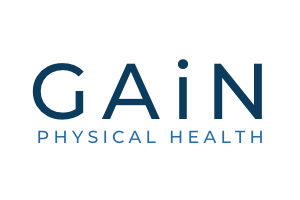You will often hear the term ‘Core Stability’ but what does that actually mean? Think of it as your body’s ability to control motions of the lumbar spine, pelvis and hips. If you then think further down the chain; ‘the hip bone connects to the knee bone’, and so on until you reach your toes, that’s where you have a biomechanical rational that researchers have investigated to see if there is any link between core stability and risk of injury in the legs.
In a recent study in the Journal of Physical Therapy in Sport, researchers investigated whether deficits in core strength/function could predict who would end up suffering an acute, non-contact sports injury e.g. a pulled hamstring or calf strain over a 1.5 year period.
They measured all sorts of things ranging from trunk and hip strength and endurance, single leg balance with reach tests, body awareness tests and functional movements. Interestingly, and helpful for clinicians like myself, they found one simple test was significantly different between athletes that sustained an acute non-contact injury compared to the uninjured athletes.
The test showed that one hip was stronger than the other, more specifically one hip movement; ‘Hip Abduction’ (e.g. laying on one side, lifting your top leg up towards the ceiling). The injured group had one leg 15% weaker than the other, versus the uninjured athletes who only had a 6% difference. Interestingly, (for me anyway!) 48% of the injured athletes sustained the injury on their stronger side and 52% of the athletes sustained the injury on the weaker side.
This shows us two things. One, if I am 15% weaker in my left hip compared to my right, as an example, I am more likely to sustain an injury such as a pulled hamstring, because of the imbalance. The second is that the injury could happen on either side, not specially my weaker side.
For me, this highlights the complexity of human biomechanics and the importance of assessing and training both sides of the body and not just focusing on the site of the injury.
Lucky for us (and you!), at GAiN Physical Health we have an amazing piece of equipment, which is used by some of the top sporting teams around the work called the VALD ForceFrame that enables us to accurately track and repeatedly measure your left versus right strength.
Reference: De Blaiser, C., Roosen, P., Willems, T., De Bleecker, C., Vermeulen, S., Danneels, L. and De Ridder, R., 2021. The role of core stability in the development of non-contact acute lower extremity injuries in an athletic population: A prospective study. Physical Therapy in Sport, 47, pp.165-172. [Online]. Available at: https://www.sciencedirect.com/science/article/abs/pii/S1466853X20305952





